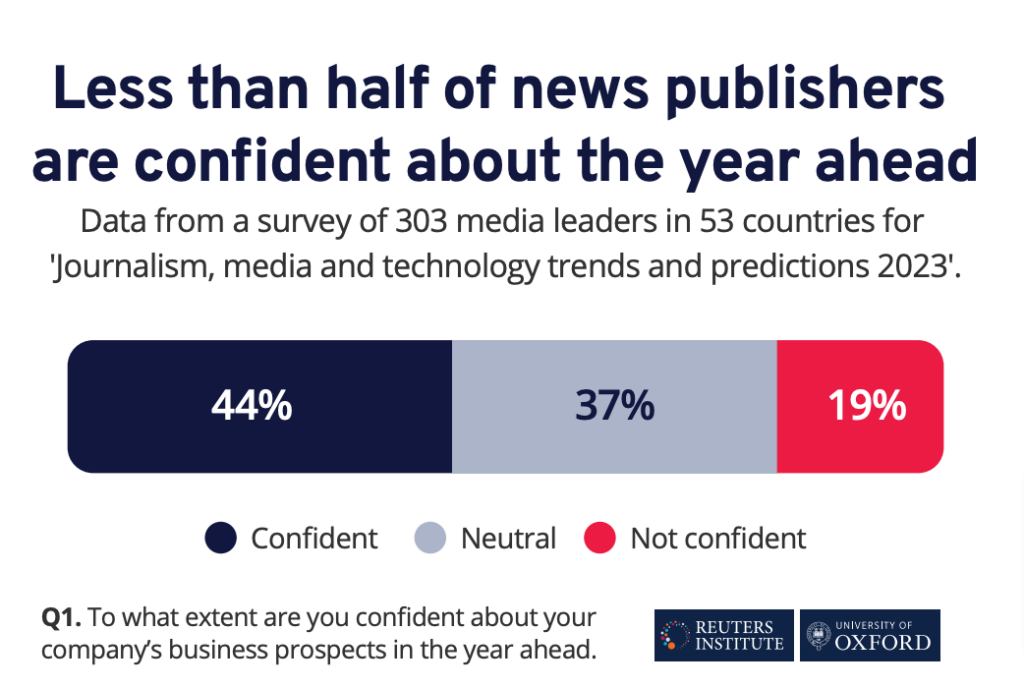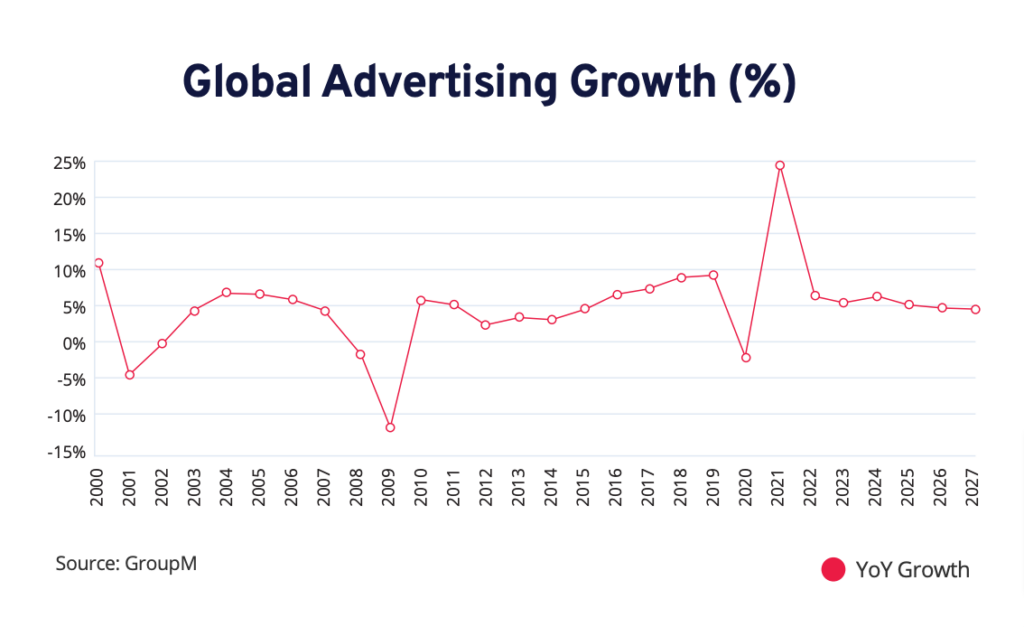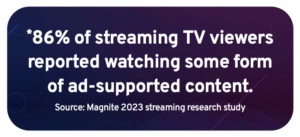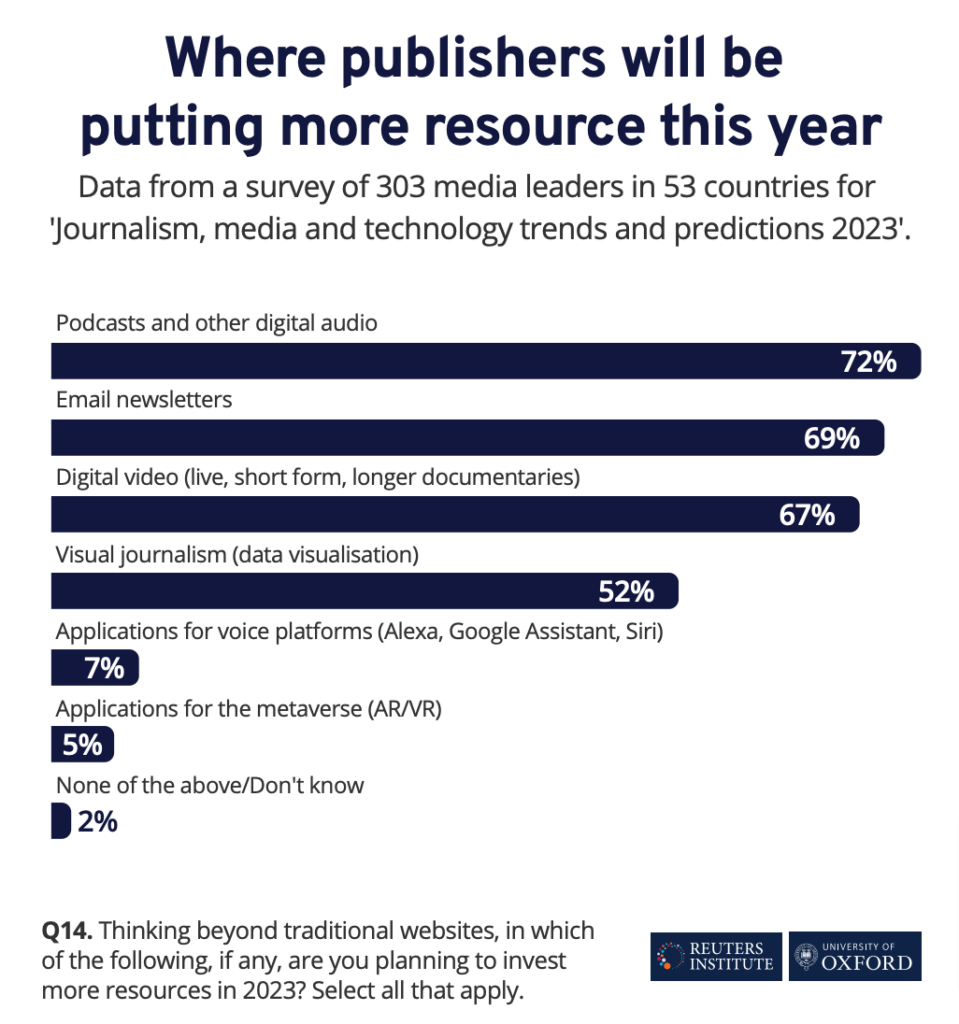DOWNLOAD THE FREE EBOOK HERE
As we head towards the end of 2023, it is looking to be the year of strategic initiatives. Uncertainty in the economy, a vast and disparate media landscape and video viewing access to a multitude of devices and platforms indicate publishers will be laser-focused on investing in the areas where impact will be greatest.
These areas in personalization and 1st party data, diverse monetization, video, audio and podcasts, attention economy and web 3.0 are leading the cautious outlook for publishers this year.
While each trend we will discuss is set to move publishers forward and help them reach their goals, the majority will approach the year with a cautious optimism as they prioritize profit over growth.

Personalization and 1st Party Data
One of the biggest trends for 2023 is a focus on 1st party data that has motivated publishers to build out data strategies and place more importance on business intelligence geared toward the consumption of their content. Utilizing 1st party data for personalized experiences is a fairly new priority to grow engagement and retention from your viewers.
Publishers have seen success by creating personalized experiences for their consumers while increasing content engagement and delivering targeted advertising. This area will continue to grow in importance as the focus on data-driven content strategies build advertising value for the business.
Increased usage of tools like Recommendations and Article Matching will be seen as drivers of significant engagement when data insights are applied to create the best user experience. Analytics and data have become so important to publishers that they are opening up once “walled gardens” and building relationships with 2nd parties to share business intelligence in order to grow opportunities to segment and target audiences. User-tailored experiences and contextual advertising will provide publishers with not only more opportunities to build revenue, but stronger viewer interactions to increase content value.
Diverse Monetization
With the goal to increase revenue, 3 to 4 diverse monetization streams will be important to publisher success this year. Whether from new advertising strategies or premium content subscription models or even new business verticals, businesses will look to deploy numerous initiatives across their ecosystem.

This is especially true for those impacted by slow growth in advertising spend and subscription acquisition.
But the story is not as grim as headlines indicate.
Advertising projections year-over-year have decreased, but still remain in single-digit growth trajectory. Third-party cookie tracking on Google may have eliminated behavioral targeting, however, focus on contextual advertising provides much needed improved ad relevance and the ability to build on engagement. Header Bidding and Programmatic offerings will likely drive significant site and app revenues as businesses look to Yield Optimization teams to increase performance.

Like advertising, subscription growth rates are also slowing, but many brands are still seeing +5% YOY growth. Brands with current subscription options will be pushing for retention through new offers, bundling and innovation. Think coupons for early renewals, access to additional exclusive content or interactive viewing experiences or simply additional subscription packages purpose-built to suit each consumer.
Other publishers will seek to add Subscription and Identity Management to their content offerings. And for the publishers with premium content, look to see expanded distribution on CTV (Connected Television) and FAST (Free AdSupported Television) platforms like Samsung TV, Roku, Tubi and Xumo. CTV and FAST businesses offer both revenue-share and content licensing models for premium content creators to grow yet another stream of revenue with a high return-on-investment when utilizing the same content published on their other platforms.
Video, Audio, and Podcasts
In order to increase retention and engagement, publishers will be looking at ways to utilize content in order to build brand affinity.
The increase in popularity of audio books, podcasts and video accessible devices, has led to a focus on these formats. Expect to see publishers experiment with these formats based on 1st party data, revenue goals, budgets and user consumption.

Those investing in audio and video will likely try to increase production of longer form content designed to generate more revenue. Others will look to efficiency models and use short-formats to reduce operational costs and while meeting audiences on social platforms.
Video content will continue to be offered in VOD (video-on-demand) and Live Streaming formats on Websites and Web Apps with live generating higher demand from advertisers. Audio and podcasts will continue to be seen by most publishers as the best way to build a deeper connection with audiences and to encourage them to come back more frequently.
Content subject matter, style and tone will also be an area of concentration. With an overload of general news content, publishers are increasingly looking to develop more unique or specialist content. The goal of these content improvements will be to help differentiate or stand out the publisher from other competitors and may even be created to be offered as premium content with stand-alone or bundled subscription.
Attention Economy
Information overload and distrust in media is causing concern for publishers, especially those providing news and information services. The overabundance of channels, sources and information (or misinformation) has driven the publishing business into an attention economy where eyeballs are in direct correlation to revenue.
A balance of authority and approachability is going to be important in order to retain and continue to attract new users. In order to really understand consumption, publishers will turn to attention metrics: time spent, conversion and completion rates. Tactics like Player Customizations, Float On Scroll, and Interactivity will be necessary to create great user experiences. And along with Personalization, insight on specific user behavior from 1st party data, will provide advertisers the confidence they need to spend money targeting key audiences.
For retailers and those publishers with sponsored in-content advertising, the shift to buying based on trends (primarily found on social and through google search) has sparked a focus on search-related features and new technology like Augmented Reality (AR) and Artificial Intelligence (AI) or Machine Learning (ML). Publishers will be focusing on experiences to retain and attract audiences. They will make content more accessible and easy to understand in a variety of formats and styles to drive revenue growth.
Web 3.0
More buzz than action, many publishers will dabble in new technologies and Web 3.0 to create and build new revenue.
Currently, tons of publishers are using AI (Artificial Intelligence) whether it’s for machine learning, predictions and Recommendations or creation of new content. The use of AI for transcription is now routine and using the technology to create automated workflows and content, like building homepages or creating AI clones of newscasters for broadcasts like weather updates, is growing.
However, as the most attractive and easiest to implement, many publishers have found that AIdriven content does not deliver authority and approachability of human-created content and actually have veered away from using it to publish premium content.
Other publishers are dabbling in Virtual Reality and Interactive experiences to build on retention and engagement by providing immersive content experiences to enhance viewer offerings. Experimenting with technology can be very beneficial in developing innovation and new opportunities for growth, but publishers should exercise caution as it may also come at cost to viewership and brand affinity if not presented as user-centric.
Summary
Despite the continued uncertainty of Q1, there is a renewed sense of direction among publishers, no matter how calculated, to prioritize initiatives that drive revenue growth.
Data-driven strategies driving personalization of content and targeted advertising, new distribution channels and formats creating diverse revenue opportunities and technology building efficient workflows and immersive experiences are all among the trends that are taking the lead in what is sure to be an interesting market for publishers in 2023.
